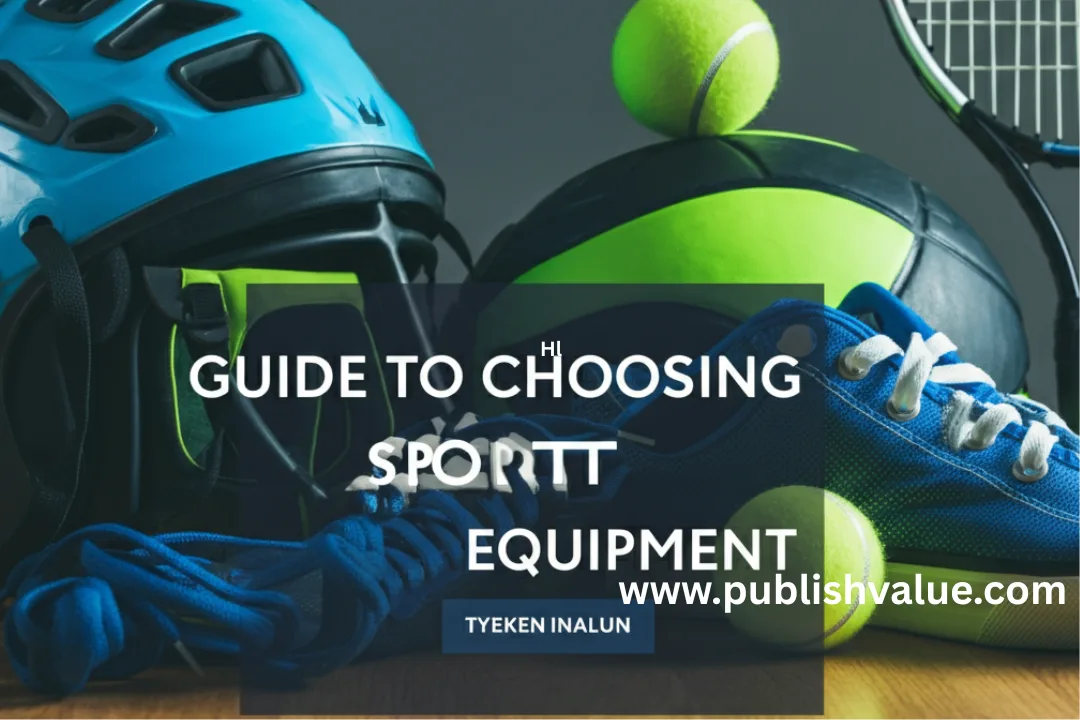
A Complete Guide to Choosing Sports Equipment
Share0Stepping onto the field or into the gym is exciting, but choosing the right sports gear can sometimes feel overwhelming. Whether you’re gearing up for your very first practice or looking to upgrade your existing equipment, those choices matter—more than most people realize. The right sports equipment doesn’t just boost your performance; it keeps you safe and helps you enjoy every moment of your chosen activity. In this friendly guide to choosing sports equipment, we’ll break down exactly what you need to know, from figuring out your needs to finding gear that lasts.
Assess Your Skill Level and What You Need
Think about where you are with your sport. Are you a fresh face just learning the ropes, or have you been competing for years? Knowing your skill level guides your choices—beginners usually don’t need fancy tech, but more advanced players might benefit from specialized features or upgrades.
For Newcomers
If you’re new, stick with the basics. Comfort and safety are more important than chasing the latest trends or high-end models. It’s smart to begin with cost-effective, dependable equipment that lets you ease into the sport without breaking your budget or sacrificing enjoyment.
For Those Leveling Up
Once you’ve built some confidence and experience, your needs will start to shift. Intermediate athletes usually find it’s worth investing in equipment that offers a bit more in terms of durability, comfort, and maybe some customization to suit their playing style.
For Serious Competitors
Seasoned athletes know that every detail counts. At this stage, it’s about finding gear made for optimal performance, with top-notch materials and precise engineering. The right choice can make a real difference in competitive settings.
Safety Comes First
No matter your level, safety should always top your list. It’s easy to get swept up in flashy features and stylish looks, but the best equipment has your well-being at heart. When shopping for sporting goods, always check for proper certification and quality construction.
Key pieces of safety equipment include:
- Helmets: Should fit snugly and meet official safety standards for your sport.
- Pads and Guards: All pads (knees, elbows, shins) need to stay in place and move with you.
- Mouthguards: Especially in contact sports, protect your teeth and jaw with a well-fitted mouthguard.
- Protective Eyewear: For racquet sports and basketball, sturdy eyewear is a must.
Get Familiar With Materials and Durability
Take a moment to look beyond the brand name. Pay attention to what your gear is made of, whether you’re shopping for a hockey stick, a pair of running shoes, or a yoga mat. Materials like breathable mesh, impact-absorbing foam, or lightweight carbon fiber are worth considering. Good build quality means your investment lasts longer—especially important if you play or train often.
Budget Wisely Without Sacrificing Quality
You don’t have to empty your wallet to find good sports equipment. Set a budget before you start shopping, and stick to it. Prioritize your money where it matters most, and don’t fall for marketing hype.
Tips for Saving While Shopping:
- Look for last season’s models—they’re often heavily discounted and nearly as good as the newest.
- Shop around and read reviews to spot solid deals and avoid overpaying.
- Consider buying bundles or multi-piece sets for team sports.
Fit and Comfort Matter Most
Forget appearance for a minute. If your equipment doesn’t fit well, you won’t play your best—and you might even risk injury. Take the time to try things on and move around. Well-fitting shoes, clothing, and gear can make or break your sporting experience.
Here’s what to pay attention to:
- Footwear: Always try shoes on in the afternoon or evening; your feet naturally swell during the day.
- Apparel: Look for fabrics that breathe and stretch. Avoid clothes that restrict movement.
- Gear: Anything you handle (bats, racquets, sticks, balls) should feel balanced in your hands. Swing or move like you would in a game to get a real sense for the feel.
Conclusion: Your Next Steps
Having read this guide to choosing sports equipment, you’re now ready to make confident, informed choices. Focus on finding gear that fits your level, keeps you safe, and matches your budget. Pay attention to materials and fit, and don’t be afraid to seek advice from coaches or shop staff if you’re stuck. The right equipment can turn a good experience into a great one.
For more detailed gear reviews and recommendations, check out REI’s Expert Advice on Sports Equipment.
Frequently Asked Questions
1. How do I know when it’s time to replace my sports gear?
Check your sports gear for cracks, loose parts, or excessive wear. If something feels unstable or uncomfortable, it’s likely time for a replacement.
2. Is secondhand equipment safe to use?
Secondhand gear can be cost-effective—just avoid buying used helmets or other crucial safety items. Always check for obvious damage before purchasing.
3. How important is the brand?
Brands can signal quality, but comfort, fit, and the right features mean more. Sometimes a lesser-known brand fits you better or lasts longer.
4. What’s the best way to make sure equipment fits?
Try on everything in-store if you can, move around, and check sizing guides—don’t rely on guesswork. Your gear should be snug but not tight.
5. What’s one item everyone should prioritize?
Start with supportive, well-fitting shoes. The right footwear can help prevent injuries and make every activity more enjoyable.
By following these steps and using this guide to choosing sports equipment, you’ll set yourself up for safe, successful, and fun times on the field, court, or wherever your sport takes you.
You may also read: Finding Your Stride: The Best Sports Shoes for Beginners
